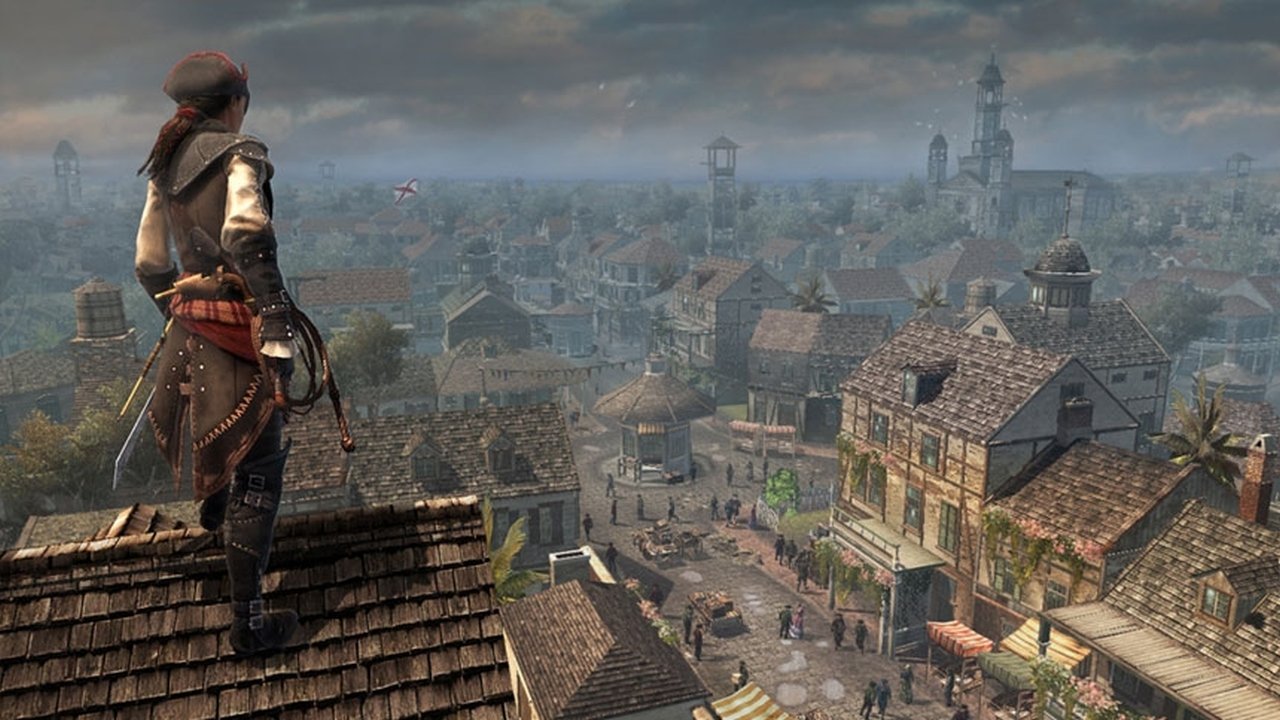It’s not that hard to ruin a perfectly good videogame.
A few unfortunate design choices can take an otherwise excellent title and make it extremely difficult to appreciate everything it does do well by continually interrupting an enjoyable experience with frustrating gameplay mechanics.
Case in point: Assassin’s Creed III: Liberation.
My PlayStation Vita is a sad little device. Its beautiful screen is rarely graced with anything other than old PlayStation One and PlayStation Portable titles and its game slot isalmost never home to one of those weird little Vita cartridges. I love the Assassin’s Creed series and very much enjoyed the latest console entry, soI was pretty excited to play through Assassin’s Creed: Liberation, a game that appeared to bring a similar experience to Sony’s neglected handheld. This, I thought, would be a Vita game that I would probably play for a long time.
 The first few hours of the game made me feel like picking up Liberation was a good choice. The Assassin’s Creed formula is eminently suited to a handheld and initially it seemed like Ubisoft Sofia, Liberation‘s developer, had designed the game with a good understanding of how to translate the console experience to a portable device. The game starts out with brisk yet satisfying missions, loads of collectables to find anda satisfying form of free-running that encourages climbing and exploring the game’s natural and manmade structures.The narrative is a bit shaky, protagonist Aveline de Grandpré feeling fairly underdeveloped and the rogues gallery also suffering fromhalf-baked characterization. Just the same, the plot is interesting enough that there’s incentive to continue moving forward through the chapters and the examination of colonial slavery that constitutes Liberation‘s theme is, like Assassin’s Creed III‘s Native American focus, pretty ambitious.
The first few hours of the game made me feel like picking up Liberation was a good choice. The Assassin’s Creed formula is eminently suited to a handheld and initially it seemed like Ubisoft Sofia, Liberation‘s developer, had designed the game with a good understanding of how to translate the console experience to a portable device. The game starts out with brisk yet satisfying missions, loads of collectables to find anda satisfying form of free-running that encourages climbing and exploring the game’s natural and manmade structures.The narrative is a bit shaky, protagonist Aveline de Grandpré feeling fairly underdeveloped and the rogues gallery also suffering fromhalf-baked characterization. Just the same, the plot is interesting enough that there’s incentive to continue moving forward through the chapters and the examination of colonial slavery that constitutes Liberation‘s theme is, like Assassin’s Creed III‘s Native American focus, pretty ambitious.
I was really impressed by Liberation for these reasons, even considering it to be one of my favourite recent handheld titles. The introduction of a few overwhelmingly terrible gameplay mechanics, implemented apparently for no other reason than to show off some of the Vita’s hardware features, changed this, though.
The Vita’s touch controls aren’t overused in most of the game; Aveline’s weapons are switched by tapping on an icon within a comfortable stretch of the right thumb and navigating a little touchscreen wheel handily that pops up on the peripheries of the display. The other touch features are purely optional. Combat, movement and menu navigation commands can be bypassed entirely in favour of traditional button pressing. All of this is good, but it doesn’t last forever.
At several points in Liberation, the game decides to force the use of the Vita’s cameras and tilt controls, essentially putting up roadblocks that halt main campaign progression. The first of these to appear comes from “coded” letters. Once Aveline has opened the envelope the player must hold the Vita up to a light source in order to reveal hidden messages. This sounds like it could be an interesting, fun little mechanic, but it simply doesn’t work. When I came to the first of these letters I spent a good five or ten minutes holding the system up to my windows, placing it directly in front of light bulbs and trying to angle the camera at the sun without being able to trigger the end of the puzzle. Finally, putting the Vita down on my desk, ready to give up and look for help from the internet, the letter was randomly illuminated and I could keep moving forward. Clearly, this is a well thought out — and incredibly fun! — gameplay feature. By the time I was tasked with trying to roll a boulder through a maze using the Vita’s accelerometer for control — a sequence that was bafflingly anachronistic, making a sophisticated piece of technology resemble one of those wood and ball bearing stocking stuffers from my youth — I had become so frustrated that I couldn’t stand to play Liberation any further.Instead of having fun with the game’s well-designed combat and exploration I was fighting with my Vita just to keep going.
It’s hard to tell why Ubisoft Sofia would have created such ill-conceived segments when the rest of Liberation is very well done. Whatever the reason, the end result is the same — a really good title with unforgiveable flaws that obscure an otherwise great experience. Assassin’s Creed III: Liberation is a warning sign, the most recent demonstration of just how easy it can be for a good game to fall apart due to a handful of poor decisions.




